This is a drawing of the interior of Jupiter's moon Ganymede.
Click on image for full size
NASA
How do we know what the inside of a Planet or Moon is like?
You may wonder how it is that scientists know what the inside of a planet is like.
The interior of a moon or planet can be closely determined from spacecraft navigation data when a spacecraft passes by or goes into orbit around a planet or moon. When a spacecraft goes into orbit, the planet or moon's gravity helps to pull it into a certain trajectory around the body. The trajectory of the spacecraft helps scientists determine the mass of the planet or moon.
The way the mass of a body is distributed inside the body affects how the body spins in space. If the body has a large core, it will spin with a certain speed, if it has no core it will spin at another rate of speed. The affect is somewhat like that of an iceskater who spins faster when her arms are close to the body than when the arms are spread apart. The mass of an iceskater who's arms are spread apart is distributed differently than the mass of an iceskater who's arms are close to the body.
By studying the rate of spin of a body, as well as determining the mass of the body, scientists can figure out if the body must have a core and how large that core must be.
The picture shown here is that of Jupiter's moon Ganymede, and illustrates that spacecraft measurements were able to determine that the moon has at least two layers inside, besides the surface crust (scientists think that there are really three layers). Scientists must still use theories to estimate exactly what the layers are made of.
You might also be interested in:
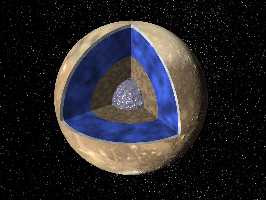
The diagram to the left shows a cutaway of the possible inside structure of Ganymede, based on recent measurements by the Galileo spacecraft. It shows a small core of metal, overlain with some rocky material,
...more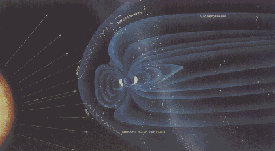
Unlike the Earth, which has a protective shield around it called the magnetosphere, the surface of the moon is not protected from the solar wind. This picture shows the magnetosphere surrounding the Earth,
...more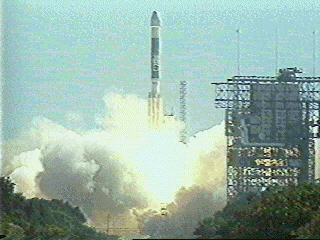
It has been more than 30 years since America's first exploratory missions to Mars. Here are some of the instruments carried onboard Mars Global Surveyor (called MGS for short). Many of these instruments
...more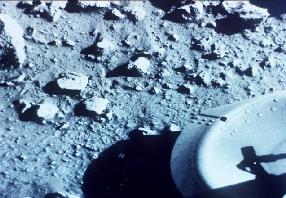
The Viking I and Viking 2 missions were designed to both orbit Mars and land and make exploratory observations on the planet's surface. At this stage in the history of the exploration of Mars, scientists
...more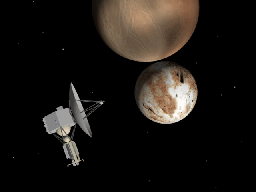
AU stands for Astronomical Units. It is a useful way to measure the distances in interplanetary space. It is the distance between the Earth and the Sun, which is about 93 million miles. For reference,
...more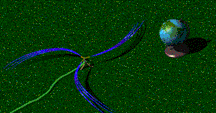
The solar wind is formed as the Sun's top layer blows off into space, carrying magnetic fields still attached to the Sun. Gusts form in the solar wind associated with violent events on the Sun. Particles
...more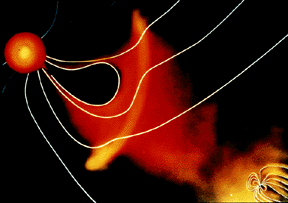
For a planet to be affected by a blob of material being ejected by the sun, the planet must be in the path of the blob, as shown in this picture. The Earth and its magnetosphere are shown in the bottom
...more














